How to measure customer experience: The complete guide for AI-powered support and growth
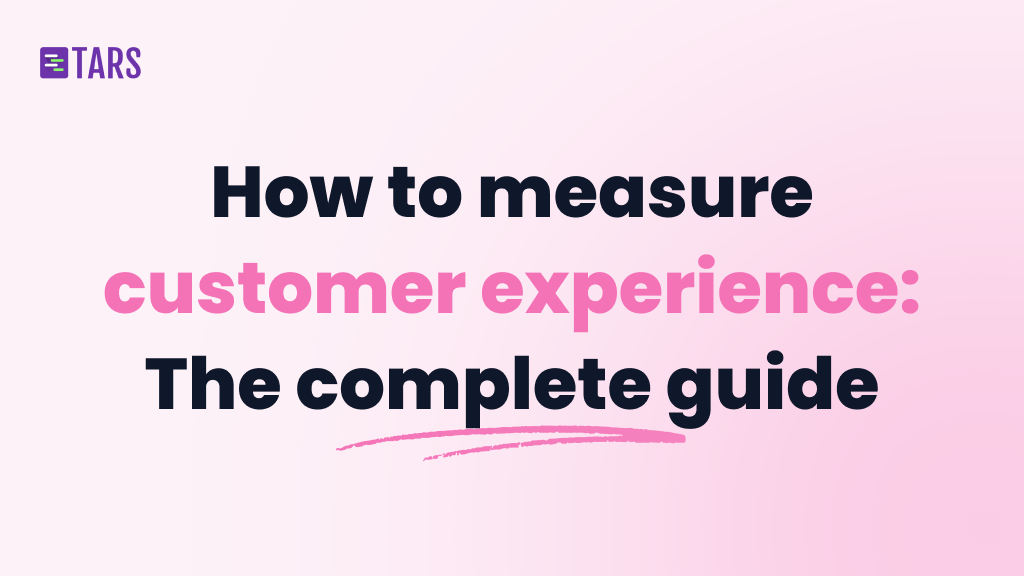
Customer experience isn’t just a buzzword—it’s what separates businesses that grow from those that struggle. Research shows that 75% of consumers will spend more with companies that treat them well. But here’s the problem: most organizations have no idea how to measure customer experience properly.
It gets messier when you realize that large companies often track 50 to 200+ different CX metrics. No two organizations measure things the same way. This creates confusion, wastes resources, and—worst of all—stops you from actually improving anything.
AI Agents for customer support and acquisition have changed the game completely. With traditional support channels, you’re stuck with surveys sent hours after the conversation ends. With AI Agents, every interaction generates real-time data. You see exactly what’s happening in every conversation.
This guide covers the metrics that matter for measuring customer experience across support and acquisition. You’ll learn which numbers to track, how to use them, and how AI Agents help you improve each one.
Why traditional CX measurement doesn’t work
Before we get into what to measure, let’s talk about why most CX measurement programs fail:
Too many metrics, no focus. Companies track dozens of metrics because they can, not because they should. When you measure everything, you prioritize nothing.
Everything happens too late. Traditional surveys show up hours or days after the conversation. By the time you spot a problem, hundreds more customers have dealt with it.
Survey fatigue is real. Customers are tired of rating every interaction. Response rates drop, and the feedback you get only comes from people who are really happy or really angry.
Data lives in silos. Marketing owns NPS, customer service owns CSAT, operations owns resolution time. Nobody sees the full picture.
You can’t act on it. Knowing your NPS dropped doesn’t tell you what to fix. Most metrics tell you “what happened” but not “why” or “what to do next.”
AI Agents solve a lot of these problems. They measure things during conversations, analyze sentiment in real-time, and give you the context you need to actually improve things.
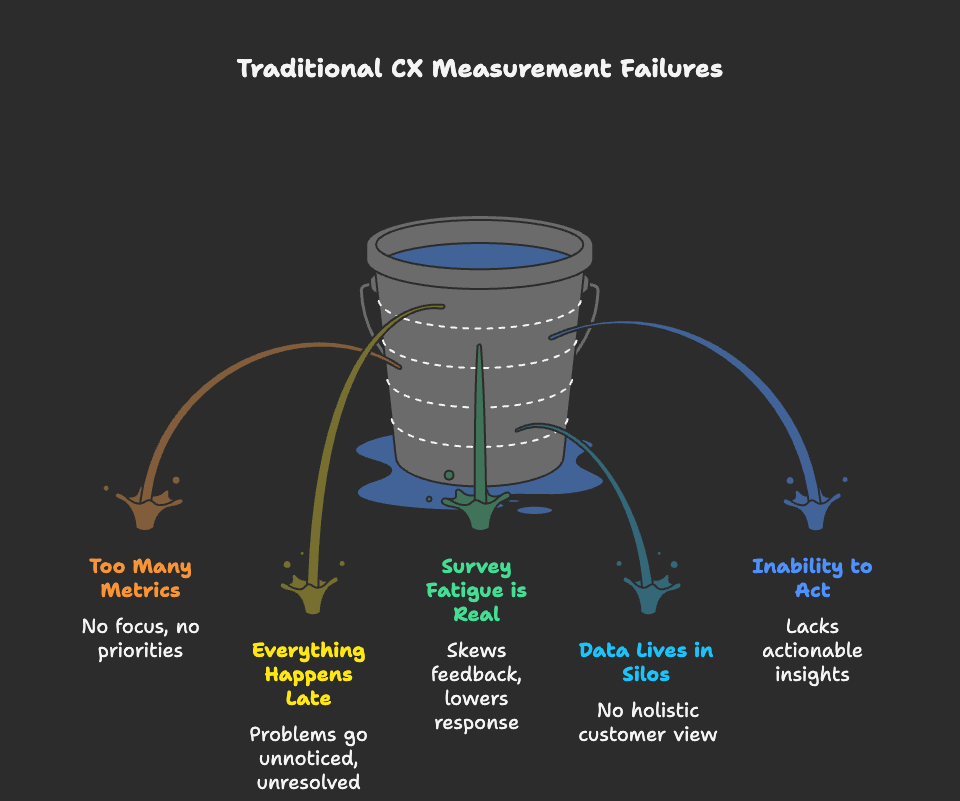
How to measure customer experience: The 5 categories metrics
According to Gartner research, all CX metrics fall into five main categories. Here’s what each one covers and which specific metrics matter most for both customer support and customer acquisition.
1. Customer satisfaction metrics
These foundational metrics capture how customers feel about their interactions with your business.
Net Promoter Score (NPS)
NPS measures customer loyalty by asking one simple question: “How likely are you to recommend us to a friend or colleague?” Respondents rate their likelihood on a scale of 0 to 10.
- Detractors (0-6): Unhappy customers who may damage your brand through negative word-of-mouth
- Passives (7-8): Satisfied but unenthusiastic customers vulnerable to competitive offerings
- Promoters (9-10): Loyal enthusiasts who will fuel growth through referrals
Your NPS is calculated by subtracting the percentage of detractors from the percentage of promoters.
How AI Agents improve your NPS: While NPS measures overall brand loyalty, AI Agents directly impact the score by improving every customer interaction. When your AI Agent resolves issues faster, provides accurate information instantly, and creates smooth experiences, customers naturally become more likely to recommend you. The key is that AI Agents handle the repetitive questions that often frustrate customers—like “Where’s my order?” or “How do I reset my password?”—freeing your human team to focus on complex situations that build real loyalty. Track NPS before and after deploying AI Agents to see the impact. Most companies see improvements within 3-6 months as the Agent handles more volume.
Customer Satisfaction Score (CSAT)
CSAT measures satisfaction with specific interactions, typically through a simple question: “How would you rate your experience today?” Customers respond on a scale (often 1-5 or thumbs up/down).
Unlike NPS, CSAT is transaction-specific, making it perfect for measuring individual touchpoints in both support and sales journeys.
How AI Agents improve your CSAT: AI Agents boost CSAT scores in two major ways. First, they respond instantly. No wait times, no “please hold,” no delayed email responses. Customers get answers immediately, which makes them happier. Second, AI Agents stay consistent. They don’t have bad days, they don’t give different answers to the same question, and they don’t transfer customers three times before solving the issue. To maximize CSAT improvements, ask for feedback naturally within the conversation flow—right after the Agent resolves an issue or completes a task. You’ll get higher response rates and more accurate feedback than traditional post-interaction surveys.
Customer Effort Score (CES)
CES measures how easy it is for customers to accomplish their goals. Research shows that reducing customer effort is one of the strongest predictors of loyalty.
The classic CES question is: “How easy was it to handle your issue today?” with responses ranging from “very difficult” to “very easy.”
How AI Agents improve your CES: This is where AI Agents really shine. They make things easier in ways traditional support can’t match. Need to check your order status at 2 AM? The Agent handles it in 30 seconds. Want pricing information without talking to sales? Done. Need to reschedule an appointment? The Agent does it without putting you on hold. For acquisition use cases, AI Agents remove friction from the buying journey. Prospects can get product information, pricing quotes, and book demos without filling out forms or waiting for callbacks. Track CES across key milestones like finding information, getting quotes, and completing transactions. Watch for patterns—if CES is low for a specific task, your Agent needs better training on that topic.
2. Customer loyalty and retention metrics
While satisfaction metrics tell you how customers feel right now, loyalty metrics predict future behavior.
Repeat Purchase Rate
The percentage of customers who make multiple purchases. For B2B companies, this might translate to expansion revenue or renewals.
How AI Agents improve repeat purchase rates: Good support experiences bring customers back. When your AI Agent makes it easy to get help, customers remember that. They’re more likely to buy again because they know if something goes wrong, getting support won’t be a headache. For acquisition, AI Agents can identify opportunities during support conversations. If a customer asks about a feature your Agent knows is in a higher-tier plan, it can mention the upgrade naturally. Compare repeat purchase rates for customers who primarily interact with your AI Agent versus those who use traditional channels. The data often shows AI-assisted customers have higher lifetime value because their experience is consistently better.
Customer Lifetime Value (CLV)
The total revenue you can expect from a customer over the entire relationship. Rising CLV indicates improving customer experience and loyalty.
How AI Agents improve CLV: AI Agents impact CLV in multiple ways. They reduce churn by solving problems quickly. They increase satisfaction by providing instant, accurate help. And they identify expansion opportunities by understanding customer needs during conversations. For example, if a customer keeps asking questions about a feature that’s only available in a premium plan, your Agent can suggest the upgrade. Track CLV by acquisition source—customers who first engaged through your AI Agent often have higher lifetime value because their initial experience was frictionless. This data helps justify your AI Agent investment by showing long-term revenue impact, not just cost savings.
Churn Rate
The percentage of customers who stop doing business with you over a given period. The inverse—retention rate—is equally important.
How AI Agents reduce churn: Customers leave when they can’t get help or when getting help is too painful. AI Agents prevent churn by making support accessible 24/7 and solving common problems instantly. But here’s what most people miss: AI Agents can detect at-risk customers before they churn. Through sentiment analysis, your Agent can flag conversations where customers show frustration or mention competitors. Your team can then reach out proactively. Monitor support tickets and resolution rates for AI-handled versus human-handled issues. If you see that issues resolved by your Agent correlate with lower churn rates, that’s proof your automation is working.
3. Advocacy and brand perception metrics
These metrics measure whether customers actively promote or criticize your brand.
Social Media Sentiment
Track mentions, sentiment scores, and engagement across social platforms. Positive sentiment indicates strong brand perception.
How AI Agents improve brand sentiment: When your support experience is good, people talk about it. AI Agents improve sentiment by giving customers fast, helpful experiences worth sharing. But there’s more—AI Agents can analyze sentiment within conversations themselves, not just on social media. Your Agent can detect frustration, satisfaction, or confusion in real-time based on how customers write. This gives you immediate feedback on experience quality. If you see negative sentiment patterns around a specific issue, you can fix it before it becomes a social media problem.
Referral Rate
The percentage of new customers who come from existing customer referrals.
How AI Agents boost referrals: People refer businesses that make their lives easier. When your AI Agent provides exceptional experiences, customers tell their friends and colleagues. For B2B companies especially, if a prospect has a smooth experience with your Agent—gets pricing instantly, books a demo without hassle, gets questions answered without waiting—they’re more likely to mention you to peers facing similar problems. Track how many referred customers come through your AI Agent channels. If referral rates are high and those customers have positive experiences with your Agent, you’ve created a referral engine.
4. Quality and operational metrics
Often overlooked, operational metrics directly impact customer experience. A perfect survey response means nothing if the product doesn’t work or the service is unreliable.
First Response Time (FRT)
How quickly customers receive an initial response to their inquiry.
How AI Agents improve FRT: This is the easiest metric to improve with AI Agents. Your Agent responds in seconds, not minutes or hours. Zero wait time, 24/7 availability. While human agents might have 5-minute FRT during business hours and much longer after hours, AI Agents maintain instant response times around the clock. This dramatically improves customer satisfaction because people hate waiting. Even if your Agent needs to escalate to a human, it can acknowledge the customer immediately, explain what’s happening, and set expectations. Compare FRT for AI-handled inquiries versus traditional channels. The difference is usually measured in minutes or hours, not seconds.
Average Resolution Time (ART)
The total time from when a customer contacts you until their issue is completely resolved.
How AI Agents improve ART: AI Agents resolve simple issues instantly. Password resets, order status checks, basic troubleshooting—these happen in under a minute instead of 10-30 minutes with human agents. For complex issues that need escalation, AI Agents still improve ART by gathering all necessary information upfront. When a human agent takes over, they have full context and can solve the problem faster. Track ART for different issue types. You’ll see that AI Agents handle certain categories much faster than humans, while complex issues still benefit from human expertise. Use this data to optimize what your Agent handles versus what goes straight to your team.
First Contact Resolution (FCR)
The percentage of customer issues resolved in a single interaction, with no follow-up required.
How AI Agents improve FCR: High FCR is where AI Agents prove their value. When customers get answers on the first try, they’re happy. AI Agents achieve high FCR by accessing your complete Knowledge Base instantly and providing consistent, accurate information every time. For support, this means solving problems without back-and-forth. For acquisition, this means prospects get pricing, product details, and booking confirmations in one conversation. To maximize FCR, regularly review conversations where customers had to contact you multiple times. Look for patterns—maybe your Agent doesn’t have enough information about a specific topic, or maybe the Knowledge Base needs updating. Use these insights to train your Agent and improve FCR over time.
Resolution Rate
The percentage of conversations where the customer’s goal was successfully achieved—whether that’s solving a problem, answering a question, or completing a transaction.
How AI Agents improve resolution rates: This is one of the most important metrics in your analytics dashboard. A high resolution rate means your AI Agent is actually helping customers, not just responding to them. AI Agents improve resolution rates by understanding customer intent accurately and having access to comprehensive information. If someone asks “Can I change my shipping address?”, your Agent shouldn’t just explain the policy—it should help them change it. Track resolution rates by issue type, customer segment, and time of day. These patterns show you where your Agent excels and where it needs improvement. If resolution rates drop for certain topics, those are training opportunities. Update your Knowledge Base, add more examples, or refine the conversation flow.
Escalation Rate
The percentage of conversations that require human intervention.
How AI Agents manage escalations intelligently: Some escalation is actually good—it means your Agent knows its limits and hands off complex issues appropriately. The goal isn’t zero escalations; it’s smart escalations. AI Agents improve this by handling routine questions that don’t need human expertise, freeing your team for issues that do. A well-trained Agent escalates when it should (complex problems, frustrated customers, edge cases) but not when it shouldn’t (simple questions it already knows how to answer). Track escalation reasons carefully. High escalation rates for basic questions mean your Agent needs better training or more complete Knowledge Base content. But low escalation rates for genuinely complex issues might mean your Agent is trying to handle things it can’t, which frustrates customers.
5. Employee engagement metrics
Surprisingly, only 10% of CX initiatives measure employee engagement, yet 86% of organizations recognize it as equally or more important than other CX challenges.
Agent Satisfaction
How satisfied are your human agents with their work? Happy employees create happy customers.
How AI Agents improve agent satisfaction: Nobody became a customer support agent to answer “What’s my password?” 50 times a day. AI Agents take over repetitive work, letting human agents focus on interesting problems that actually use their skills. Your team solves complex issues, builds relationships with customers, and makes real decisions instead of reading scripts. Survey your team regularly about working alongside AI Agents. Most companies find agent satisfaction improves because work becomes more meaningful and less monotonous.
Agent Productivity
Measure the volume and quality of work your agents complete. AI augmentation should increase both.
How AI Agents boost team productivity: When AI Agents handle 60-80% of routine inquiries, your human agents can focus on the remaining 20-40% that actually need human judgment. This means each agent effectively handles more total customer interactions, but spends their time on work that matters. Track conversations per agent before and after deploying AI Agents. You’ll typically see that agents handle fewer total conversations themselves, but the customer volume your team supports overall increases significantly. Quality stays high (or improves) because agents aren’t rushing through simple issues to get to complex ones.
Advanced metrics for AI-powered customer experience
Beyond traditional CX metrics, AI Agents unlock measurement capabilities that weren’t possible before. Here’s what you can track now.
Real-time sentiment analysis
Traditional surveys ask customers how they felt after an interaction. AI sentiment analysis detects emotion during the conversation itself.
Your AI Agent can tell when someone is frustrated based on their word choice, sentence structure, and tone. When it spots negative sentiment, it can adjust its approach, offer escalation to a human, or trigger a notification to your team.
This lets you:
- Find frustrated customers before they churn and reach out proactively
- Understand which topics or issues cause the most frustration
- Spot satisfaction in real-time and ask for referrals or reviews at the right moment
- See emotional patterns across thousands of conversations
Track sentiment trends over time. If average sentiment is improving, your CX is getting better at a fundamental level. If it’s declining, something changed—maybe a product issue, a policy update, or a gap in your Knowledge Base.
Conversation pattern recognition
AI analytics can spot patterns in customer interactions that humans would miss when looking at individual conversations. After analyzing thousands of chats, your Agent might notice:
- Customers who ask three specific questions in a row usually want to talk to sales
- When people use certain phrases, they’re actually asking about a different topic than you’d think
- Specific issues always require escalation, so maybe those should go straight to humans
- Certain conversation flows lead to higher satisfaction and conversion rates
Use these insights to improve your Agent’s responses and conversation design. If you see a pattern where customers get frustrated at a specific point, fix that part of the conversation. If a particular approach consistently leads to high satisfaction, replicate it elsewhere.
Intent recognition accuracy
How well does your AI Agent understand what customers are trying to do? High intent recognition accuracy means customers get relevant help quickly.
For example, when someone says “I need to change my order,” your Agent needs to understand they want to modify an existing order, not place a new one. When someone asks “Do you have this in blue?”, your Agent should recognize they’re asking about product availability.
Track this metric across different intents—like “check order status,” “request refund,” “schedule demo,” or “get pricing.” You’ll find your Agent recognizes some intents perfectly and struggles with others. The ones it struggles with are where you need to add more training examples or clarify the conversation flow.
Conversation completion rate
The percentage of conversations where customers reach a clear endpoint—either their issue gets resolved, they escalate to a human, or they opt out—rather than just disappearing mid-conversation.
Low completion rates mean something’s wrong. Maybe your Agent is taking too long to get to the point. Maybe it’s asking too many clarifying questions. Analyze abandoned conversations to see where and why customers drop off. Often you’ll find specific questions that confuse people, or points in the conversation where the wait time is too long.
Self-service success rate
For support, this tracks how many issues customers resolve entirely through your AI Agent or Knowledge Base without needing human help. For acquisition, it measures how many prospects complete key steps—like reviewing pricing, learning about features, or booking demos—without talking to sales.
High self-service success rates are good for everyone. Customers get instant answers instead of waiting. Your team handles fewer routine requests and focuses on complex situations. And your business scales support and acquisition without proportionally scaling headcount.
Track self-service success by issue type for support and by milestone for acquisition. This shows you which areas work well with automation and which genuinely need human interaction.
How to build an effective CX measurement framework
Having identified the metrics that matter, here’s how to create a measurement framework that actually drives improvement:
Step 1: Audit your current metrics
List every CX metric your organization tracks. For each one, ask:
- Who owns this metric?
- How is it calculated?
- What decisions do we make based on this metric?
- Does this metric actually measure customer benefit?
Get rid of vanity metrics. If you track something just to have a number, not to improve anything, stop tracking it.
Step 2: Align metrics with business objectives
Define your top 3-5 business objectives. Examples: reduce churn, increase conversion rate, improve customer satisfaction, lower support costs. Then pick the 2-3 metrics that most directly measure progress toward each objective.
This creates a hierarchy:
- Strategic metrics for executives (NPS, CLV, revenue per customer)
- Operational metrics for team leaders (resolution rate, FCR, conversion rate)
- Diagnostic metrics for your team (sentiment by topic, escalation reasons, conversation patterns)
Everyone sees the numbers that matter for their role.
Step 3: Establish baselines and targets
Measure your current performance for each selected metric. Set realistic improvement targets based on:
- Industry benchmarks (if you can find them)
- Your historical performance
- What your team can actually handle
Don’t set random goals like “increase NPS by 10 points.” Focus on understanding why metrics change and making steady improvements.
Step 4: Create integrated dashboards
The problem isn’t lack of data—it’s lack of visibility. Create dashboards that:
Show the complete picture. Don’t separate support metrics from sales metrics or operational metrics from satisfaction metrics. Customers don’t experience your business in pieces; don’t measure it that way.
Let people explore the “why.” Start with high-level numbers but let users dig deeper. If CSAT drops, you should quickly see which customer segments, issue types, or conversation patterns caused it.
Show trends, not just snapshots. A single day’s FCR rate doesn’t matter much. The trend over weeks or months tells the real story.
Make it accessible. Not everyone is a data analyst. Good dashboards surface the most important insights automatically with clear next steps.
When you use AI Agents, you get comprehensive analytics that go beyond basic metrics. You can monitor every conversation with complete visibility, track resolution rates and sentiment analysis, and identify patterns in customer interactions. Use these insights to continuously optimize your Agent’s performance, refine responses, and scale effectively.
Step 5: Close the feedback loop
Measurement without action is pointless. Create clear processes:
Weekly reviews: Team leads look at operational metrics to spot immediate issues and opportunities.
Monthly analysis: Leaders review strategic metrics to check progress and adjust priorities.
Continuous optimization: Use conversation analytics to refine your Agent’s responses, update your Knowledge Base, and improve conversation flows.
Quarterly strategy sessions: Senior leadership reviews overall CX performance and decides on investments and direction.
AI-powered CX lets you improve faster. You don’t wait weeks for survey responses. You see performance data in real-time and make adjustments immediately.
Common pitfalls to avoid
Even with the right metrics and framework, organizations make these mistakes:
Relying on one metric. No single number captures the full customer experience. NPS alone won’t tell you what to fix. Resolution rate alone won’t predict loyalty. Use a balanced approach.
Measuring activity instead of outcomes. “Number of conversations handled” or “survey responses collected” are activity metrics. They don’t tell you if customers are actually satisfied or successful.
Ignoring context. A drop in CSAT during a product launch might be normal. A spike in resolution time during peak season is expected. Always look at the bigger picture.
Analysis paralysis. When you have data on thousands of conversations, it’s easy to get overwhelmed. Focus on the metrics that align with your top business objectives first. Expand from there.
Forgetting the human side. Metrics show you what happened, but they don’t explain why customers feel a certain way or what they really need. Combine quantitative data with customer interviews and direct feedback.
The future of CX measurement: predictive and prescriptive analytics
We’re entering an era where CX measurement isn’t just about tracking what happened—it’s about predicting what will happen and knowing what to do about it.
AI-powered analytics can:
Predict churn risk based on conversation patterns, sentiment trends, and support history. If a customer’s sentiment has been declining and they’re asking questions about cancellation policies, your Agent can flag them as at-risk.
Identify expansion opportunities by detecting interest in additional products or services during conversations. When someone asks “Can this do X?” and X is a premium feature, that’s a sales opportunity.
Forecast support volume based on historical patterns, product releases, and external factors like seasonality. You’ll know when to staff up before the rush hits.
Recommend optimizations by analyzing millions of conversations to identify the responses, flows, and approaches that work best. Your Agent literally learns from what works and applies it automatically.
This shift from descriptive (what happened) to predictive (what will happen) to prescriptive (what to do) represents where customer experience is heading.
Putting it all together: a practical CX measurement checklist
Ready to improve your CX measurement? Use this checklist to get started:
Customer support:
- Track resolution rate and first contact resolution
- Monitor average resolution time and first response time
- Measure CSAT and CES for support interactions
- Analyze sentiment trends across conversations
- Identify common escalation reasons
- Compare AI Agent-resolved vs. human-resolved metrics
Customer acquisition:
- Track conversion rate by conversation type
- Measure CES for key acquisition milestones
- Monitor intent recognition accuracy
- Analyze conversation completion rates
- Identify conversation patterns that lead to conversions
- Track time-to-conversion for AI Agent-assisted vs. traditional channels
Overall CX strategy:
- Establish NPS and track it quarterly
- Monitor customer lifetime value by acquisition channel
- Track retention and churn rates
- Measure employee satisfaction and productivity
- Create executive dashboards with strategic metrics
- Set up weekly metric review processes
- Implement continuous AI Agent optimization based on insights
Conclusion: From measurement to mastery
Measuring customer experience isn’t about collecting the most data points or having the fanciest analytics. It’s about understanding what your customers experience, why they experience it, and what you can do to make it better.
The companies that win at customer experience aren’t those with the most metrics—they’re the ones that use the right metrics to make things better every day.
AI Agents for customer support and acquisition have changed what’s possible in CX measurement. With real-time sentiment analysis, complete conversation visibility, and pattern recognition across thousands of chats, you can finally move beyond delayed surveys and scattered data to truly understand every customer interaction.
The question isn’t whether you can afford to invest in better CX measurement. It’s whether you can afford not to. Your competitors are already using these insights to get ahead.
A writer trying to make AI easy to understand.
- Why traditional CX measurement doesn’t work
- How to measure customer experience: The 5 categories metrics
- 1. Customer satisfaction metrics
- 2. Customer loyalty and retention metrics
- 3. Advocacy and brand perception metrics
- 4. Quality and operational metrics
- 5. Employee engagement metrics
- Advanced metrics for AI-powered customer experience
- Real-time sentiment analysis
- Conversation pattern recognition
- Intent recognition accuracy
- Conversation completion rate
- Self-service success rate
- How to build an effective CX measurement framework
- Step 1: Audit your current metrics
- Step 2: Align metrics with business objectives
- Step 3: Establish baselines and targets
- Step 4: Create integrated dashboards
- Step 5: Close the feedback loop
- Common pitfalls to avoid
- The future of CX measurement: predictive and prescriptive analytics
- Putting it all together: a practical CX measurement checklist
- Conclusion: From measurement to mastery


Build innovative AI Agents that deliver results
Get started for freeRecommended Reading: Check Out Our Favorite Blog Posts!
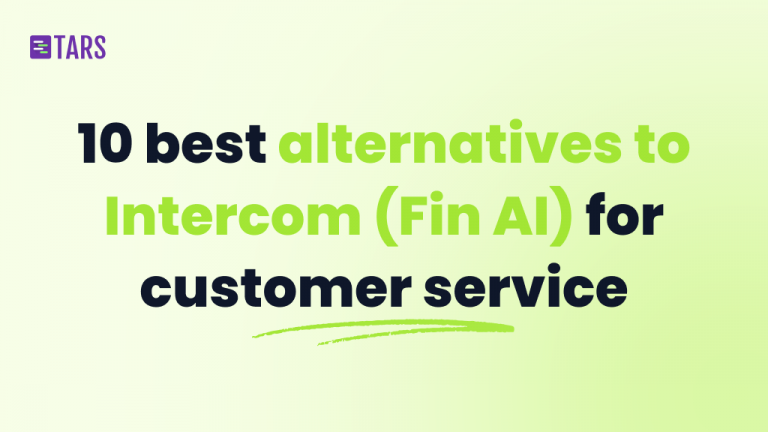
10 best alternatives to Intercom (Fin AI) for AI-powered customer service [2025]
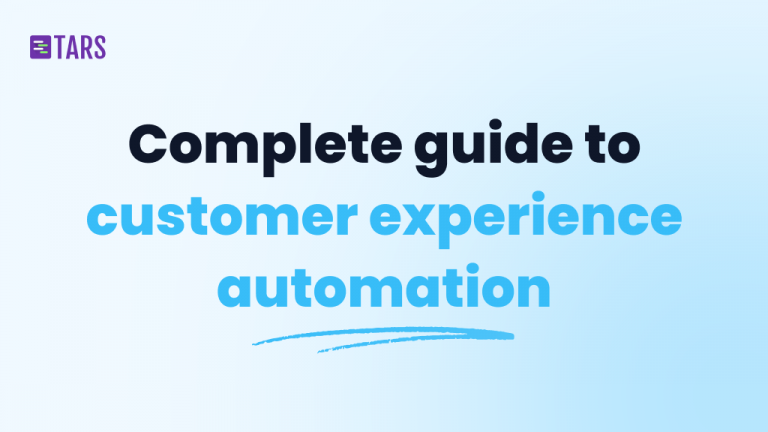
Customer experience automation: The complete guide to CXA in 2025
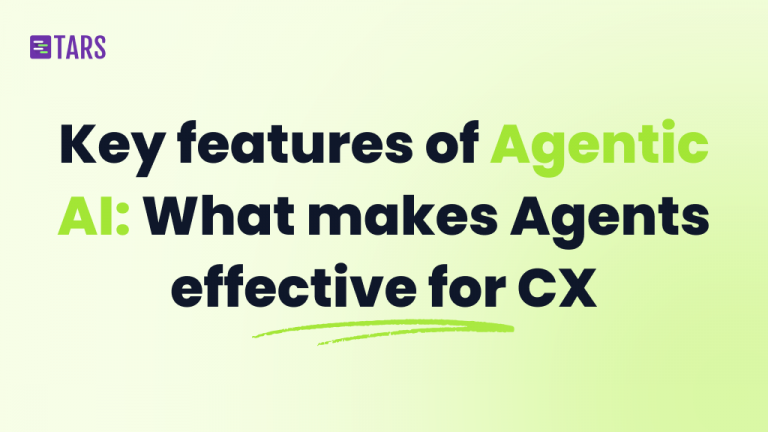
Key features of Agentic AI: What makes AI Agents effective for customer experience

Our journey in a few numbers
With Tars you can build Conversational AI Agents that truly understand your needs and create intelligent conversations.
years in the conversational AI space
global brands have worked with us
customer conversations automated
countries with deployed AI Agents